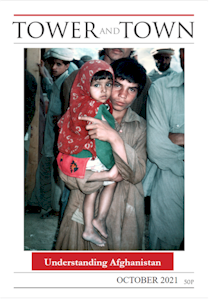

Tower and Town, October 2021 (view the full edition) (view the full edition)QuackersOnly one of our native ducks really quacks, and that's the female mallard. If you take the path southwards along the canal at Crofton you'll come to Wilton Water, a small lake near Great Bedwyn, which supplies the summit pound of the Kennet and Avon Canal with water. Halfway along there's a waterside bench with the name "Quackers" on it, and there are always mallards there in a sheltered bay, (as well as gadwall and tufted ducks) and like as not they'll be quacking away merrily. Their breeding season is from mid-March to July. The laying period is very stressful for the female as she lays more than half her body weight in eggs over a couple of weeks, a dozen in batches of three or four. She needs a lot of rest and depends heavily on her mate to protect her. The male is a handsome fellow with a glossy-green head, a white neck-ring and a purplish-brown breast. After the breeding season all males go into "eclipse" plumage they moult all their flight feathers and become flightless for about a month, making them vulnerable to predators. By October the glamorous plumage is restored, at a time when the duck population has increased with the arrival of visitors from the north Fenno-Scandia, Russia, Iceland and elsewhere. At the Slimbridge Wildfowl Refuge, the Cotswold Water Park and on the larger Wiltshire lakes, numbers are building up. A flock of wigeon call with a whistling "wee, whee-oo" and a short low musical "krrit" from the shallow margins denotes the presence of a small flock of teal, the smallest European duck. There are other surface-feeding or dabbling ducks. Along with increased numbers of mallard and gadwall, shovelers have arrived, sifting the surface with spoon-like bills, and pintails, the males with chocolate brown heads, a white streak from breast to neck and, as the name suggests, pointed tails. Then there are the diving ducks along with pochards and tufted ducks comes the scarcer goldeneye, which has a conspicuous white spot on its triangular-shaped black head. Perhaps the most handsome of all these immigrants is the male goosander with its long white body, glossy-green head and black back. The breast is a pinkish white, the bill, which is red, is spike-like and has toothed edges, classifying the goosander as a "sawbill." It's birds like these that lend colour and excitement to late autumn birdwatching. Robin Nelson |